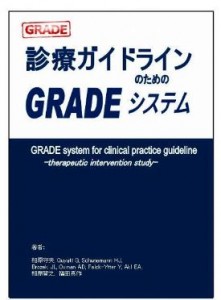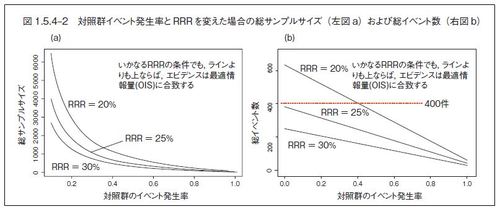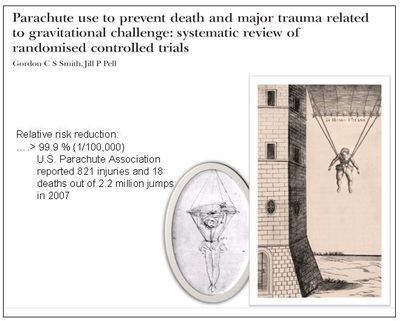高垣先生の「エビデンスガール EBM愛が患者を救う」
・・・ わかりやすいですね。 (^^)
https://www.jiho.co.jp/shop/list/detail/tabid/272/pdid/55948/Default.aspx

また、貴重なご著書に私のことまで取り上げていただき、感謝します。これからのご活躍をますます楽しみにしております。
高垣先生の「エビデンスガール EBM愛が患者を救う」
・・・ わかりやすいですね。 (^^)
https://www.jiho.co.jp/shop/list/detail/tabid/272/pdid/55948/Default.aspx

また、貴重なご著書に私のことまで取り上げていただき、感謝します。これからのご活躍をますます楽しみにしております。
EBMの原則に従って、エビデンスの確実性のGRADE評価と、価値観と意向を考慮したevidence to decisionフレームワークを利用して推奨を作成しているのが、MAGICappです。
●Australian guidelines for the clinical care of people with COVID-19では、MAGICappを使用して、COVID-19に関する49件の推奨事項、39件のCQが発表されています。(7/9時点)
●MAGIC Evidence Ecosystem Foundationでは、
抗ウイルス薬に関する推奨は、Weak recommendation againstです。
ステロイドは、ARDSを伴う場合は、weak recommendationで、ARDSを伴わない場合はWeak recommendation againstです。
JCE誌 (2017; 84)におけるControversy and Debate(April 2017)
●Fava AG. Evidence-based medicine was bound to fail: a report to Alvan Feinstein
●Gordon Gの反論:EBM has not only called out the problems but offered solutions
●Ioannidis JPAのコメント:Hijacked evidence-based medicine: stay the course and throw the pirates overboard
Gordonの反論は、そのまま日本の現状に当てはまる。
診療ガイドライン作成者は、Gordonの主張の意味を理解してほしい。
| Individualized care is at the heart of EBM. EBM provides guidance for when to believe subgroup analyses (seldom); when and how one can individualization care through N of 1 RCTs (sometimes); when and how to consider baseline risk in trading off benefits and harms (often); and when and how to consider individual patient values and preferences (always) |
Predictors of persistent pain after breast cancer surgery: a systematic review and meta-analysis of observational studies.
CMAJ. 2016 Jul 11. pii: cmaj.151276
GRADEの活用が広がっている。
ちなみに、バイアスのリスク(risk of bias)は、criteria from Users’ Guides to the Medical Literature 3eを使っている。エビデンスの確実性はGRADEで、エビデンスプロファイルも記載されており、imprecisionの考え方も参考になります。
エビデンスに基づく診療に関しては、6Sピラミッドが有名です。
[診療ガイドライン]は、このピラミッド構造において、トップから2番目のSummariesに位置づけされています。そして、同じ階層には、エビデンスに基づく教科書として[UpToDate]があります。
UpToDateの内容に異論を唱える国内の医療関係者はどなたもいないでしょうし、日本版語による検索が可能になっており、さらには日本版UpToDate?を自負するものが作成・公開されています。
さて、本家UpToDateにおいて採用されている、”エビデンスの質”や”推奨の強さ”の評価基準は
GRADEシステム です。
・・・・・・ この事実は、国内ではあまり知られていないようです。
しかし、例えば、日本版UpToDateと主張する、「今日の臨床サポート」はどうでしょうか?
同じ基準を使っているだろうと思いきや・・・ その評価基準は 全く本家とは異なるものです。(–;
・・・・・・ この事実もまた、国内ではあまり知られていないようです。
エビデンスの質や推奨の強さを作成している方々には、エビデンスの質や診療ガイドラインにおいて、国際的な標準となっている、GRADEシステムとはどのようなものなのかを、よく理解してほしいと思います。
現状のままでは、今後登場するGRADEのさまざまな拡大適用に、ついていけないことは明白です。
・・・・・来年早々に出版する「GRADE第2版」を読んでいただくと、この意味がよくわかると思います。
GRADE第2版の前に、「初版」で記載している基本内容を理解してほしいです。

私の師匠であるガイアットが本書のために作成してくれた「初版の序文」だけでも読んでみてください。
http://www.grade-jpn.com/grade_gg_preface.pdf
臨床試験を報告する際は、有効性を評価するためのサンプルサイズが十分なものを提示してほしい。いつの間にか、添付例の注釈が無視・削除された結果の図表が利用され続けると、後々大きな問題となることになります。また、スタート時点でのサンプルサイズが適切でも、early stopped trialという場合もあります。
これらは、high risk of biasのためにエビデンスの質を下げることにつながります。
例; 心房細動における新規抗凝固療法:J-ROCKET AF
J-Rocket AF研究結果を利用して「リバーロキサバンの効果」を発表する方々は、よく注意して発表すべきですし、できたらJ-Rocket研究のRisk of biasの総合評価を常に提示してほしい。そうすることで、読者の誤解も少なくなるでしょう。読者も点推定値だけを取り上げた薬剤販売戦略に惑われず、サンプルサイズやイベント数に注目する必要があります(*)。
この研究に限らず、すべての臨床研究についてはRoB (limitations)とセットで紹介するようにし、統合エビデンス(body of evidence) ならば「効果推定値の確信性(エビデンスの質」を提示してほしい。・・・ そのようにすると注目度もアップするでしょうし、発表者と読者にとっての一石二鳥どころか、次にメタ解析する立場の人にとってもとても役立つことになります。
(*) サンプルサイズやイベント数は、「データの不精確さ(imprecision)」というGRADEの5要因の1つです。下図からも、いかなる対照群イベント発生率の状況でも、総イベント数が200件以下のものは信頼性が低いことがわかります。
■図1.5.4‒2 対照群イベント発生率とRRRを変えた場合の総サンプルサイズ(左図a)および総イベント数(右図b)
(参照: 診療ガイドラインのためのGRADEシステム、p58)

以前から問題が指摘されていたKyoto heart study論文が撤回されました。
The papers, according to the editor, “contain a number of serious errors in data analysis.”
Kyoto Heart Studyの研究デザインはPROBE法、そして、いくつかのサブ解析のイベント数は、脳卒中 61例、狭心症66例、心筋梗塞18例で、45~50%もの相対リスク減少(RRR)!
———
統計学的にいかに有意差があったと著者や製薬会社が宣伝しても、われわれはだまされない。
これまでの”利益を理由に早期中止されたランダム化比較試験”の特徴から、「100件未満の試験における50%ものRRRは信じるべきではない」(JAMA医学文献ユーザーズガイド(相原 他 監訳)より)。
同じような大規模試験は国内にはたくさんありますが、問題は当該試験において使われる統計手法の理論的根拠を明確に理解している研究者が極めて少ないということでしょう。不適切な研究からの”効果を強調した図”を見せられて、統計解析の誤りを含めて反論できる臨床医は少ないと思います。
Diovan三部作の他の研究はいかに。
● いくつかの診療ガイドラインにおいて、本研究を引用しているものがありますが、迅速な内容修正が必要となります。
高血圧治療ガイドラインの内容を閲覧しようとして、
●日本高血圧学会Hpにアクセスすると、
→「全文をMindsに掲載している」
●Mindsにアクセスすると、
→「ライフサイエンス出版から購入を」
しかも、2009年版です。
学会ガイドライン作成ー出版社、 この連携を解消することが必要と思います。
EBMに関して有名なBMJパラシュート論文があります。このパロディ論文は、EBMそのもの、あるいはRCT至上主義に対する批判に使われているようですが、EBM-working groupやGRADE working groupの考えは異なっています。
■BMJ論文
Parachute use to prevent death and major trauma related to gravitational challenge: systematic review of randomised controlled trials. BMJ Journal. 2003;327:1459
BMJ論文の内容は次のようなものです。
高所からの落下に関連した死亡や重篤な外傷を防止するためのパラシュート使用:
ランダム化比較試験のシステマティック・レビュー
●目的と方法:
高所からの落下時の重篤な外傷を防止するためにパラシュートが有効かを評価するために、ランダム化比較試験のシステマティック・レビューを実施した。
情報源は、Medline, Web of Science, Embaseやコクランライブラリ、適切なインターネット情報サイトと引用リスト。主要アウトカムは、死亡もしくは重篤な外傷(injury severity score > 15)であった。
●結果:パラシュート介入のランダム化比較試験はなかった。
●考察:
健康障害の予防を意図した数多くの介入についてもいえることだが、パラシュートの有効性についてランダム化比較試験を使用した厳格な評価がなされていない。EBMの擁護者は、観察研究のデータのみを使って評価された介入の採択を批判してきた。最も急進的なEBM肯定派論者がパラシュートの二重盲検ランダム化プラセボ対照クロスオーバー試験を企画し、これに参加すれば、誰もがメリットを享受できるだろう。
■同じテーマに関して、EBM-, GRADE working groupの考え方は次のようなものです。
 |
(図は、Holger Schunemann教授より) |
Not thinking about effect sizes separately (and thus basing your “level of evidence” solely on study design) is wrong. When effect sizes are large (or extremely large, as in the parachute example), conduction RCTs are not necessary.
効果の大きさを別に考えない(そして、エビデンスのレベルを研究デザインだけで決定する)ことは、間違っている。効果サイズが大きい(もしくは、パラシュート例のように極めて大きい)ならば、RCTの実施は必要ない。
GRADEアプローチによる評価は、観察研究のエビデンスの質 (low)をrate-upする( high)。
Oxford CEBM Levels of Evidenceは、2011年改訂版が公開されています。
前バージョンに比べて単純に(脚注が少なく)なり、システマティックレビューが入手できない場合でも利用できると紹介していますが、GRADEと同じようなレベルのアップダウン評価があります。
“level may be graded down on the basis of study quality, imprecision, indirectness, inconsistency, very small absolute effect size; level may be graded up if there is a large or very large effect size”.
注意: CEBMは、この表だけを利用することはせず、Introductory Document、
Background DocumentMをよく読むようにと警告しています。
しかし、このCEBM 2011 levels of Evidenceを使ったエビデンス評価はとても煩雑であり、アウトカム中心というよりは研究デザイン主体による推奨決定は、Cochrane collaborationや EBM working group, GRADE working groupの方向性とは異なるものと思います。
エビデンスのレベル(level)、エビデンスの階層構造(hierarchy)、エビデンスの質(quality)、などのEBM用語が現在も多用されていますが、
(GRADEシステムが登場する前は)エビデンスの質評価は研究デザインに依存したものでした。
そして、Oxford Centre for Evidence-based Medicine (OCEBM) – Levels of Evidenceの2011年new version(部分的にGRADEシステムを利用)のように、GRADEシステムが報告された後でも、多くのグループにおいてエビデンスの質の評価方法は変わっていません。
OCEBMを参考にしているMinds2007も同じ評価アプローチです。
いったい、いつから研究デザインによるエビデンス・レベルの評価が行われるようになったのだろうか?
・・・・・・・
その最初の報告論文は、1979年のCanadian Task Force on the Periodic Health Examinationで、David Sackettも名を連ねています。
periodic health examination. Canadian Task Force on the Periodic Health Examination CMAJ November 3, 1979 121:1193-1254
■Quality of the evidenceは4段階:
I: Evidence obtained from at least one properly randomized controlled trial.
II-1: Evidence obtained from well designed cohort or case-control analytic studies, preferably from
more than one centre or research group.
II-2: Evidence obtained from comparisons between times or places with or without the intervention.
Dramatic results in uncontrolled experiments (such as the results of the introduction of penicillin
in the 1 940s) could also be regarded as this type of evidence.
III: Opinions of respected authorities, based on clinical experience, descriptive studies or reports
of expert committees.
■Classification of recommendationsは5段階:
A: There is good evidence to support the recommendation that the condition be specifically considered
in a periodic health examination.
B: There is fair evidence to support the recommendation that the condition be specifically considered
in a periodic health examination.
C: There is poor evidence regarding the inclusion of the condition in a periodic health examination,
and recommendations may be made on other grounds.
D: There is fair evidence to support the recommendation that the condition be excluded from consideration in a periodic health examination.
E: There is good evidence to support the recommendation that the condition be excluded from consideration in a periodic health examination.
the final recommendation for each condition relied heavily on our assessment of the evidence for effectiveness of treatment. Thus, a class A recommendation was rarely made in the absence of grade I evidence regarding effectiveness of treatment or prevention. However, an exception to this rule occurred when a clinical intervention was shown, in grade II terms, to save the lives of victims of a previously universally fatal condition. For example, if malignant hypertension is left untreated, all affected patients will die; if treated, most will survive. Thus, grade II evidence is sufficient for a class A recommendation. Such examples are rare, however, and grade I evidence was required for the highest recommendation for most of the conditions.
————————-
論文には、C recommendationの考え方とか、risk benefitバランス、sensitivity, secificity and predictive value; and the safety, simplicity, cost and acceptability to the patient.、など現在のGRADEにつながる基本理念が記載されています。
注: GRADEにおいては、個々の研究のエビデンスを評価するのではなく、複数の研究のシステマティック・レビューを使う。すなわち、アウトカムを主体として研究横断的に収集した総体エビデンス(body of evidence)の質を、アウトカムごとに評価する